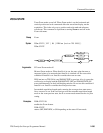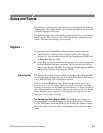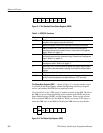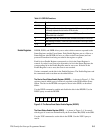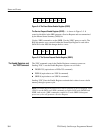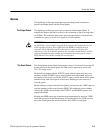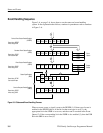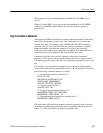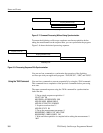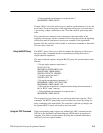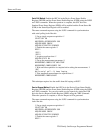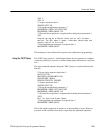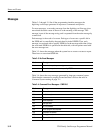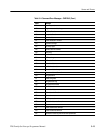
Status and Events
TDS Family Oscilloscope Programmer Manual
3–7
When output is sent to the Output Queue, the MAV bit in the SBR is set to
one (5).
When a bit in the SBR is set to one and the corresponding bit in the SRER is
enabled (6), the MSS bit in the SBR is set to one and a service request is
generated (7).
Synchronization Methods
Although most GPIB commands are completed almost immediately after being
received by the digitizing oscilloscope, some commands start a process that
requires more time. For example, once a HARDCOPY START command is
executed it may be a few seconds before the hardcopy operation is complete.
Rather than remain idle while the operation is in process, the digitizing
oscilloscope will continue processing other commands. This means that some
operations will not be completed in the order that they were sent.
Sometimes the result of an operation depends on the result of an earlier
operation. A first operation must complete before the next one gets processed.
The digitizing oscilloscope status and event reporting system provide ways to do
this.
For example, a typical application might involve acquiring a single-sequence
waveform and then taking a measurement on the acquired waveform. You could
use the following command sequence to do this:
/** Set up single-sequence acquisition **/
SELECT:CH1 ON
HORIZONTAL:RECORDLENGTH 500
ACQUIRE:MODE NORMALSAMPLE
ACQUIRE:STOPAFTER SEQUENCE
/** Acquire waveform data **/
ACQUIRE:STATE ON
/** Set up the measurement parameters **/
MEASUREMENT:IMMED:TYPE AMPLITUDE
MEASUREMENT:IMMED:SOURCE CH1
/** Take amplitude measurement on acquired data **/
MEASUREMENT:IMMED:VALUE?
The acquisition of the waveform requires extended processing time. It may not
finish before the digitizing oscilloscope takes an amplitude measurement (See
Figure 3–7). This can result in an incorrect amplitude value.



